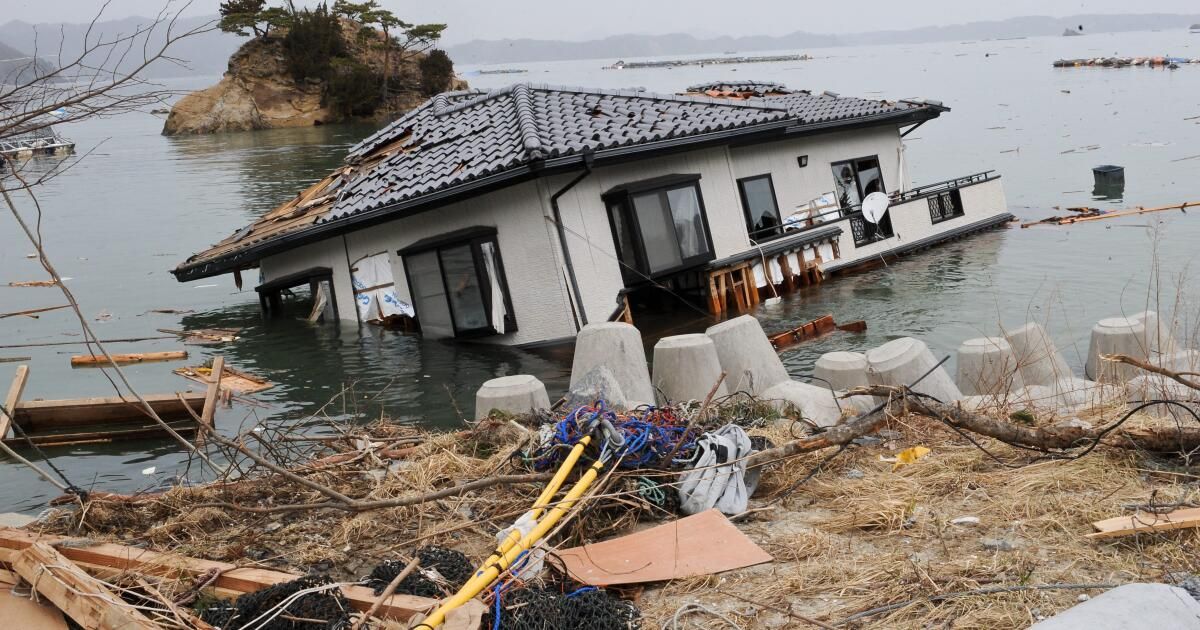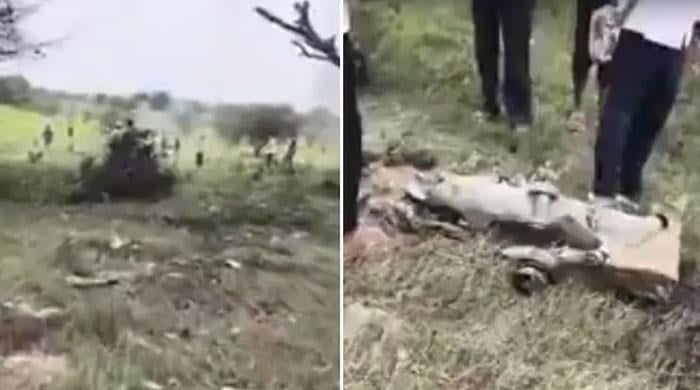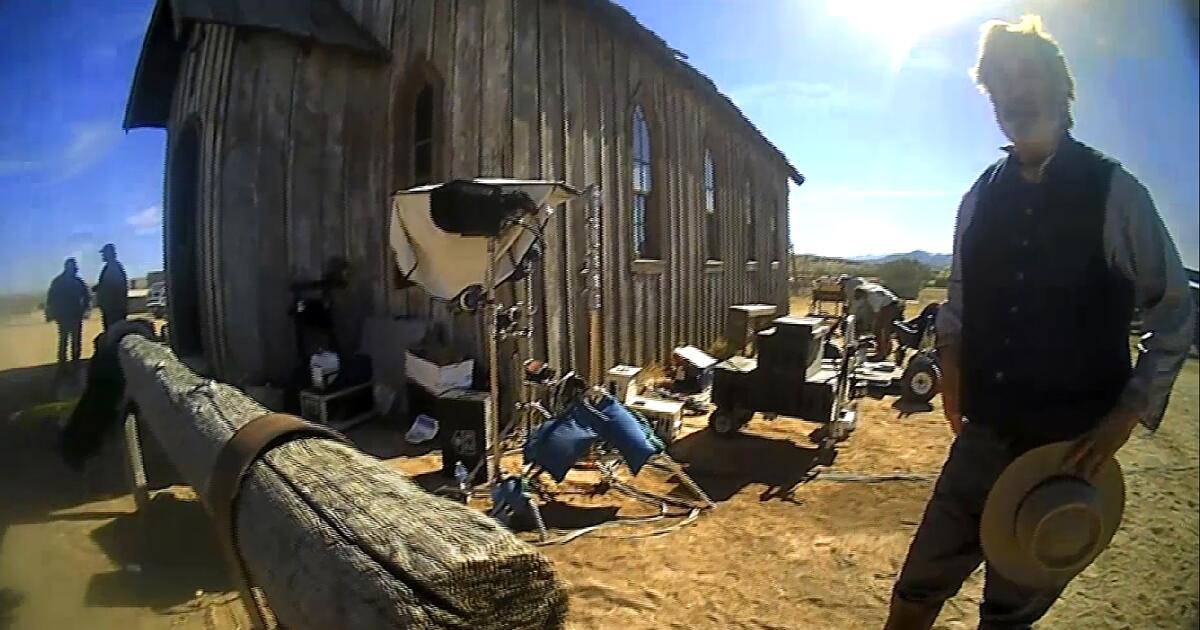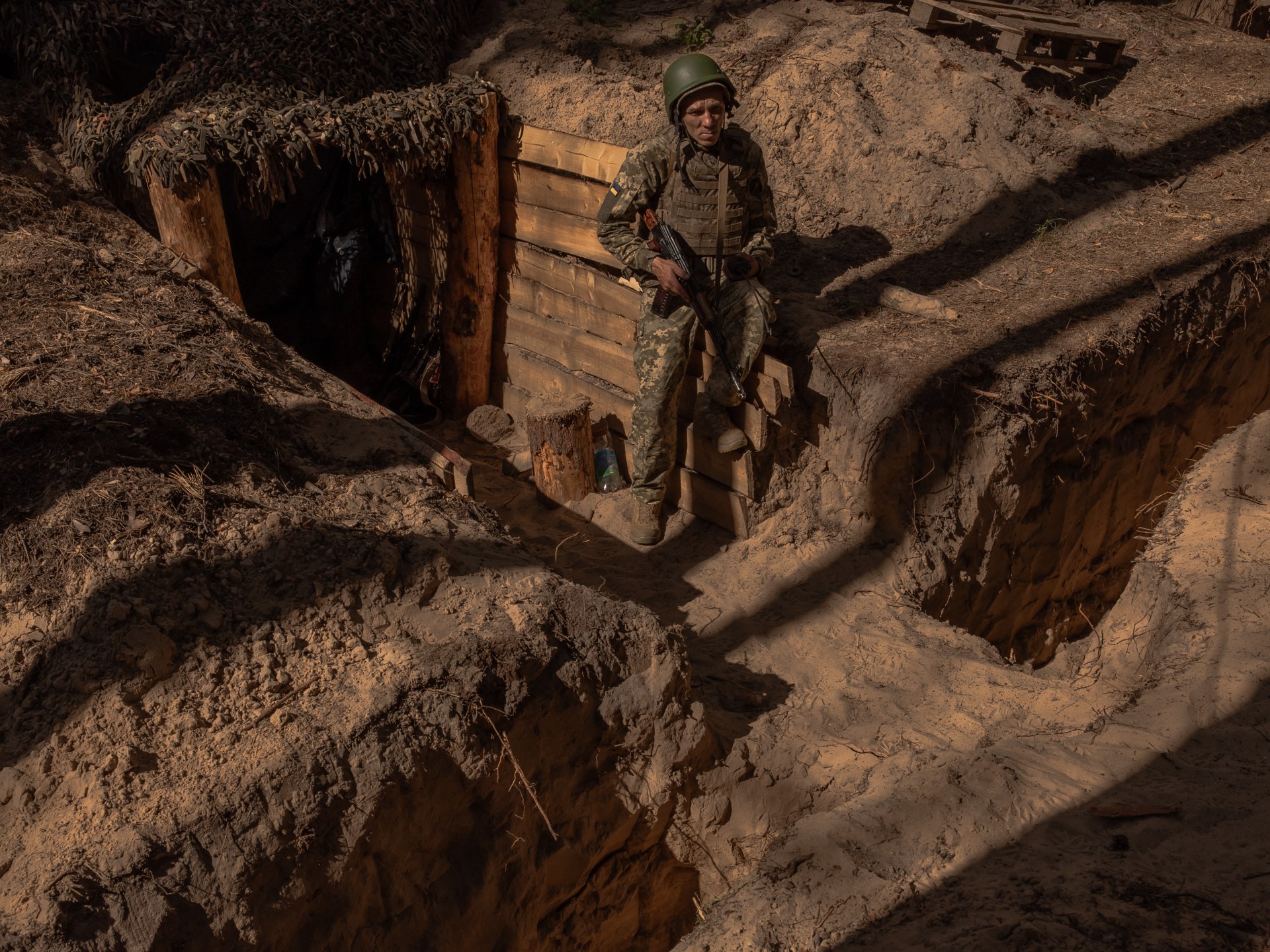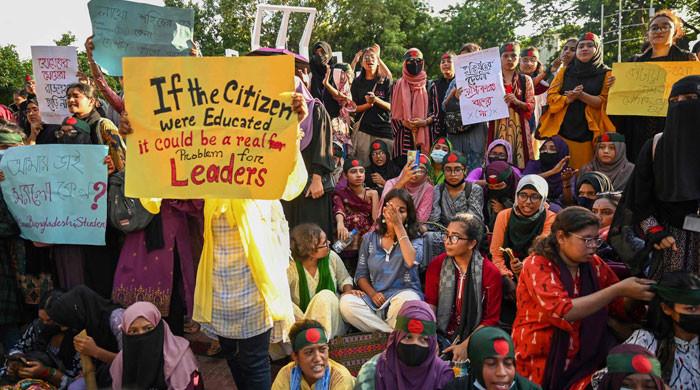More than 1,300 earthquakes have reached the Tokara Islands of Japan in two weeks, which caused evacuations of dozens of residents of the remote archipelago at the southern end of the country.
Although important damage has not been reported and notes of Tsunami, the Japan weather agency have warned that tremors as strong as a “lower 6” in the seismic intensity scale of seven stages of Japan, as one that happened on Thursday, can continue.
The lower 6 indicates an intensity that can make people stop without resisting stable support.
People spent the collapsed buildings after an earthquake in Wajima, Prefecture of Ishikawa, Japan, on January 2, 2024.
(Associated Press)
“The seismic activity remains dynamic,” said Jma's official, Ayataka Ebita, at a press conference on Sunday, and that has promoted the fears of a megaquesa.
The tremor have coincided with the viral panic derived from the 2021 reprint of a comic that many are now interpreting as a clairvoyant prediction of an important earthquake. “The real disaster will come in July 2025,” said the cover of “the future I saw” by manga artist Ryo Tatsuki. The graphic novel, which explores Tatsuki's dreams, also presents a panel that says “the background of the ocean between Japan and the Philippines will break.”
In recent months, that prediction has become an object of intense online speculation. It has even extended to nearby countries such as Hong Kong, where a recent dip in tourism has been blamed for Japan.
Last month, Hong Kong airlines suspended all the flights to Japanese prefectures in southern Kagoshima and Kumamoto, citing low demand.
In South Korea, the panic of the earthquake has been summoned as a reason for the deck of flights to Japan compared to last year, although industry experts have said that there are other factors at stake: greater competition between airlines and a stronger yen that reduces the acquisiting power of South Korean tourists.
On Saturday, the South Korean singer Taemin of the band Shinee, who was in Japan for a concert, referred to the prediction of Tatsuki in a live broadcast, ensuring fans who was safe and jokingly saying that an earthquake could make his performance “great.”
But before the violent reaction to make the light of a natural disaster, then it issued an apology in Japanese and Korean.
There is a reason why the scientifically unfounded prediction of a comic is currently winning so much traction: Tatsuki was (more or less) just before. The first edition of the graphic novel, published in 1999, referred to a “mass disaster” in March 2011 and contained lines such as: “I dreamed with a great disaster. The waters of the Pacific Ocean south of the Japanese archipelago will rise.”
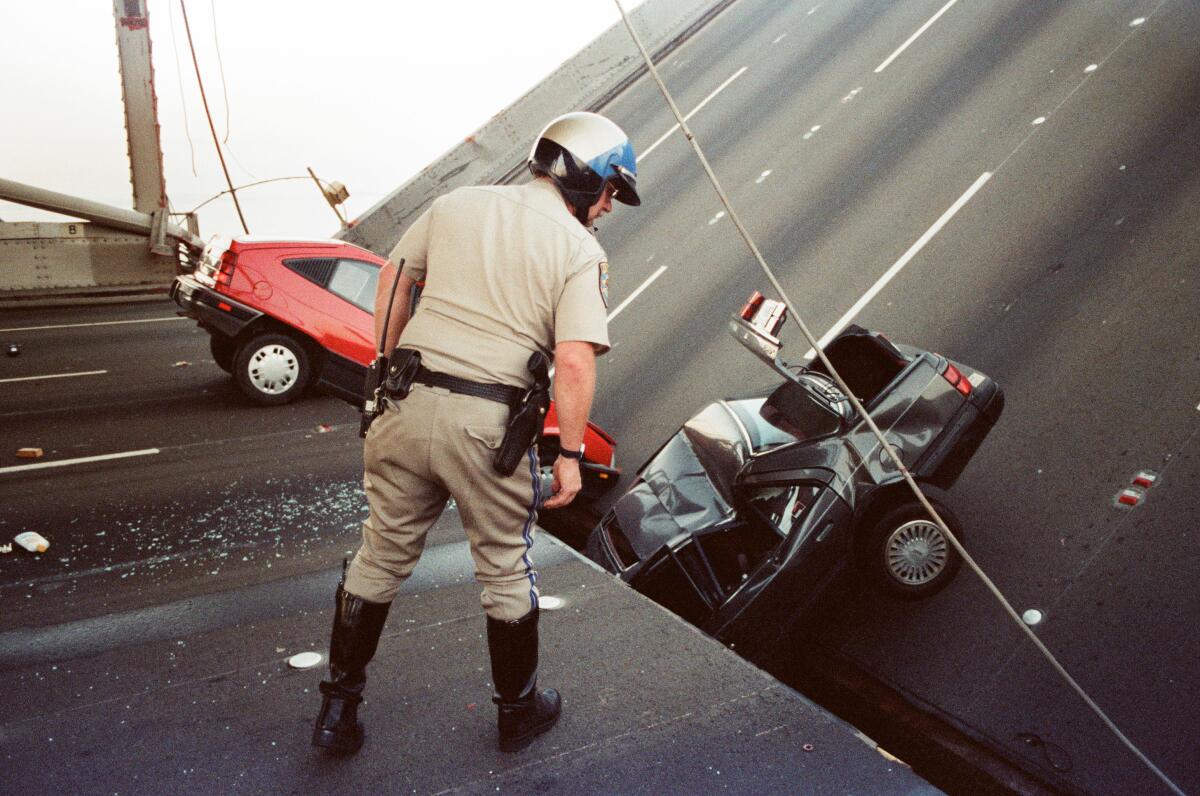
A California road patrol officer verifies the damage to the cars that fell when the upper cover of the Bay bridge collapsed on the lower deck after the Loma Prieta earthquake in San Francisco on October 17, 1989.
(George Nikitin / Associated Press)
That prediction seemed to come true with the massive Tohoku earthquake 2011that killed more than 19,000 people and triggered the Tsunami that led Fukushima nuclear disaster. With an estimated $ 360 billion incurred in economic damage, the earthquake remains one of the most expensive natural disasters in history. 9.0 was recorded on the Richter scale, which measures the magnitude of the earthquake. Shindo, the Japan's seismic intensity scale, measures intensity in a specific location.
The coincidence catapulted Tatsuki to fame and made his manga a sales success.
But in recent weeks, Tatsuki has tried to quell panic for its last prediction, saying in a statement issued through its editor that “was not a prophet.”
“I think everyone should be free to make their own interpretation,” Mainichi newspaper in Japan told May. “However, I think it is important not to be too swept in the process and act properly in consideration of the opinion of experts.”
Officials and scientists of the Japanese government have struggled to discredit theories, emphasizing that it is scientifically impossible to predict earthquakes with such precision.
“It is absolutely a coincidence. There is no causal connection,” said Ebita de la JMA on Saturday. “In Japan, earthquakes can occur at any time. Please, get ready, always.”
:::
Japan is one of the most prone countries to the earthquakes in the world, given its location within the Pacific Fire Ring, a 25,000 mile belt long of hot seismic and volcanic points that sprouted around the perimeter of the Pacific Ocean, including the west coast of the United States.
The country experiences about 1,500 earthquakes per year, or almost a fifth of the total world, and government agencies and public schools regularly practice earthquake evacuation exercises.
New Year's Day last year, an earthquake of magnitude 7.5 in the Peninsula of the Center in downtown Japan led to more than 500 deaths and destroyed or damaged at least 37,000 homes.
Because they feel horcated on two superimposed tectonic plates, the Tokara islands have been prone to seismic activity, such as “earthquake swarms”, an explosion of relatively lower earthquakes that occur in a rapid succession that can last up to several months. (Southern California is another common site of earthquake swarms, although many are so lower that they are barely perceived).
The archipelago covers 12 individual islands, only seven of which are inhabited by about 660 combined residents, and the current swarm of earthquakes there is the most substantial since 1995. Two recent swarms that occurred in 2021 and 2023 exceeded more than 300 lands each.
Although it is not clear why the current swarm is much greater than those cases, Takuya Nishimura, an earthquake expert at the Disaster Prevention Research Institute of the University of Kyoto, says it can be the result of volcanic activity.
“I suspect that the subsurface movement of magma caused a serious activity of the earthquake,” he said. “Several previous studies show underwater volcanoes around the Swarm region, which suggests the existence of magma under the ground.”
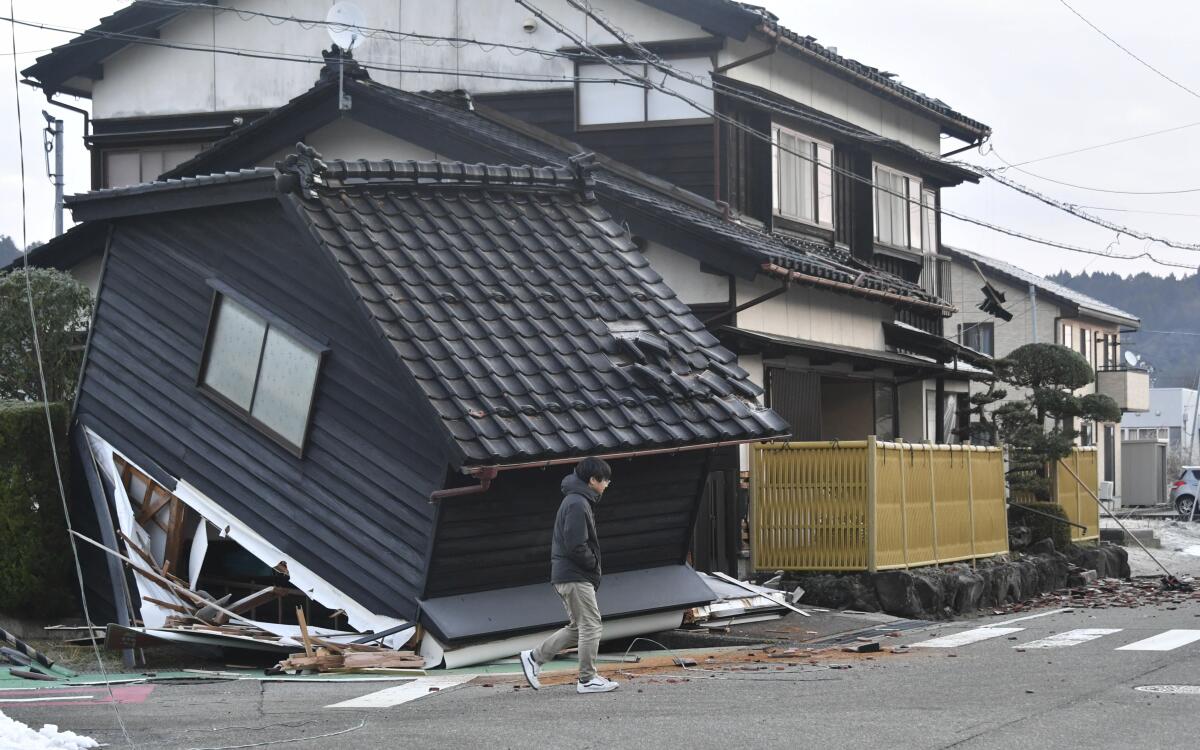
A building collapses in the city of Anamizu, the Prefecture of Ishikawa, on January 2, 2024. An earthquake with an estimated magnitude of 7.4 hit the region of notes of the Prefecture of Ishikawa, in downtown Japan, around 4:10 pm the previous day.
(Noboru Hosono / Associated Press)
Despite the current viral attention around Tokara's swarm, experts such as Nishimura are more concerned with another much more credible earthquake prognosis that has fallen over the country for years.
Earlier this year, a government panel estimated that there is a possibility of 80% of a magnitude of 8 to 9 megawackake on the Richter scale that occurs along the Japan Nankai channel in the next 30 years.
A 559 -long fault line located on the Pacific coast of Japan characterized by its subduction, in which a tectonic plaque is forged under another, the Nankai channel has produced devastating earthquakes every 90 to 200 years. The last occurred in 1946.
Under the worst case of the government, it is projected that the next megathrust earthquake in Nankai Mate about 300,000 people, most of them will probably perish in the tsunamis reaching up to 100 feet, and cause damage of up to $ 1.8 billion.
In comparison, the number of deaths from the Loma Prieta earthquake of 1989 and the 1994 Northridge earthquake, the two largest seismic events in the recent history of California, were 63 and 57. Meanwhile, experts are studying the southernmost end of the fault of San Andreas, which has not had an earthquake of 7 or bigger from some time between 1721 and 1731.
“A future Great Nankai earthquake is surely the most anticipated earthquake in history: it is the original definition of the” great “”, “,”, “,”, ” wrote Geologists Kyle Bradley and Judith A. Hubbard in 2024.
Earlier this month, the Japanese government announced a series of countermeasures aimed at reducing the number of deaths by up to 80% and structural damage by 50%, including the fact that buildings are more resistant to earthquakes and improving evacuation protocols.
“It is necessary that the nation, municipalities, companies and non -profit organizations meet and take measures to save as many lives as possible,” said Japanese Prime Minister Shigeru Ishiba.
But Nishimura, the earthquake expert, says that more need to meet these ambitious objectives.
“Although realizing the decrease in structural damage can be a challenge due to a limited budget, the reduction of deaths can be achieved through more soft -type countermeasures, such as training and evacuation exercises,” he said.

